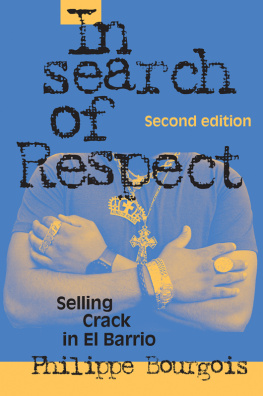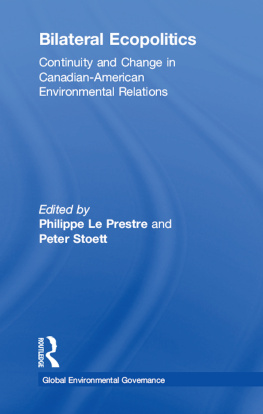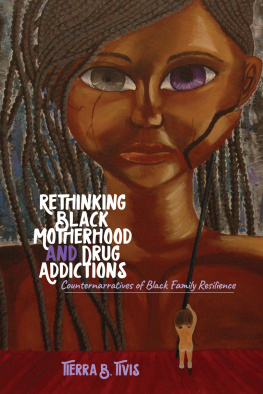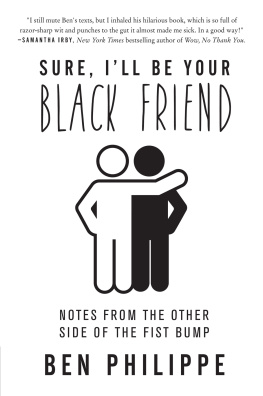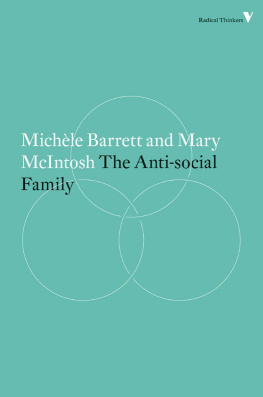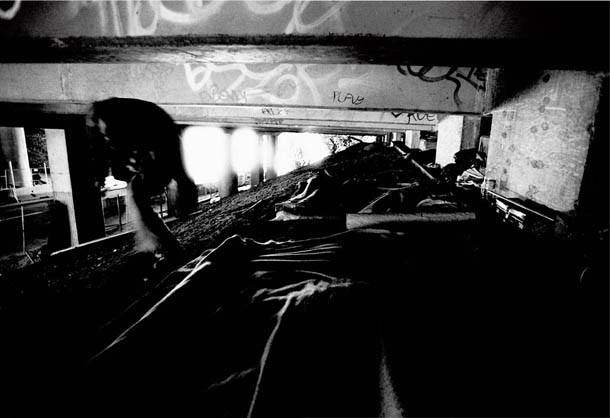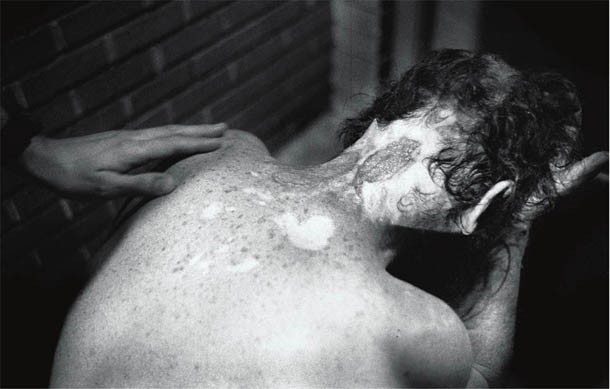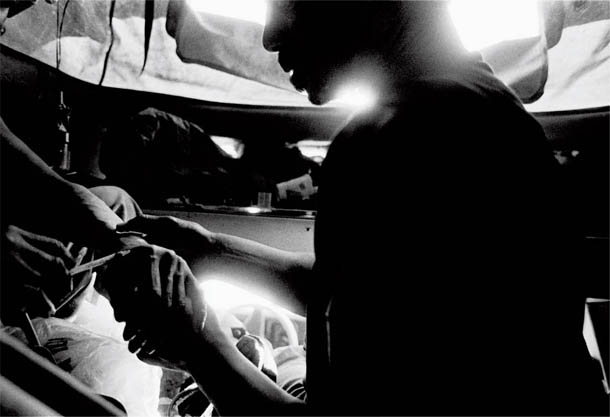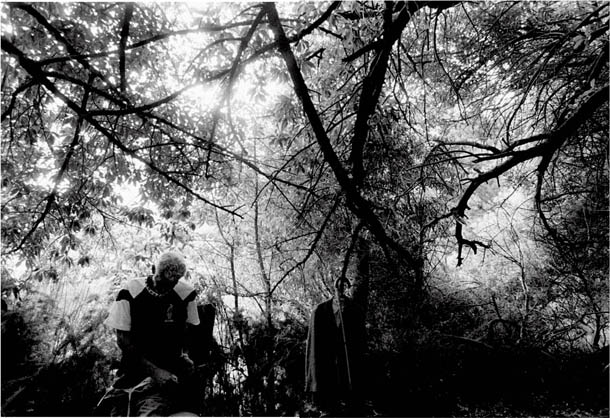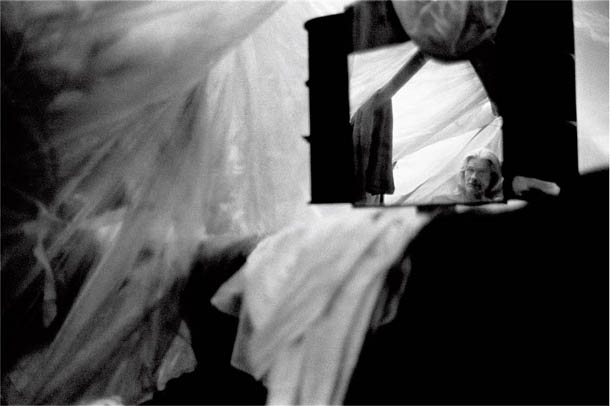The California Series in Public Anthropology emphasizes the anthropologists role as an engaged intellectual. It continues anthropologys commitment to being an ethnographic witness, to describing, in human terms, how life is lived beyond the borders of many readers experiences. But it also adds a commitment, through ethnography, to reframing the terms of public debatetransforming received, accepted understandings of social issues with new insights, new framings.
Righteous Dopefiend
Philippe Bourgois | Jeff Schonberg

The publisher gratefully acknowledges the
generous support of the General Endowment
Fund of the University of California Press Foundation.
University of California Press, one of the most distinguished university presses in the United States, enriches lives around the world by advancing scholarship in the humanities, social sciences, and natural sciences. Its activities are supported by the UC Press Foundation and by philanthropic contributions from individuals and institutions. For more information, visit www.ucpress.edu .
University of California Press
Berkeley and Los Angeles, California
University of California Press, Ltd.
London, England
2009 by The Regents of the University of California
Photographs Jeff Schonberg
Text: 9.25/14 Scala
Display: Akzidenz Grotesk
Designer: Nola Burger
Compositor: Integrated Composition Systems
Indexer: Sharon Sweeney
Printer and Binder: Friesens Corporation
Library of Congress Cataloging-in-Publication Data
Bourgois, Philippe I., 1956.
Righteous dopefiend / Philippe Bourgois, Jeff Schonberg.
p. cm.
Includes bibliographical references and index.
ISBN 978-0-520-23088-0 (cloth : alk. paper)
ISBN 978-0-520-25498-5 (pbk. : alk. paper)
1. Drug addictsUnited StatesSocial conditions. 2. Drug addictsUnited StatesEconomic conditions. 3. Homeless personsDrug useUnited States. 4. Marginality, SocialUnited States. I. Schonberg, Jeff, 1967. II. Title.
HV5825.B677 2009
305.90874dc22
2007050924
Manufactured in Canada
18 17 16 15 14 13 12 11 10 09
10 9 8 7 6 5 4 3 2 1
The paper used in this publication meets the minimum requirements
of ANSI/NISO Z39.481992 (R 1997) (Permanence of Paper).
For Philippes mother, Ann,
and for Jeffs family, Julie, Zane, and Sebastian
Contents
There is nothing righteous about dopefiends. Theyre assholes; theyll screw you. There is nothing enjoyable about this life.Max
Introduction
A Theory of Abuse
Jeffs Fieldnotes
Cars shoot one by one around the blind curve of the exit ramp as they descend from the freeway without reducing their speed. Frank is the first to cross. He strains to listen, but the background roar of rush hour traffic above us drowns out the sound of oncoming cars. He takes a deep breath, jumps off the curb, and sprints safely past the DO NOT ENTER sign onto the median. Felix follows, crossing carefully but more confidently. Now it is my turn. I timidly stick out one foot as though testing the temperature of water, hold my breath, and dash to the other side. I have driven past this spot weekly for the last ten years, but when I feel it for the first time below the rubber sole of my shoe, and when I grab the iron guardrail to hoist myself onto the median, I feel as if I am stepping onto foreign soil.
We are approaching a shooting gallery known as the hole, a recessed V-shaped space beneath the juncture of two major San Francisco freeways. To enter it, we have to sidestep along a six-inch-wide cement beam for another ten yards, with cars rushing by on either side.
A discarded metal generator sits at the far end of the space. Three catty-corner, earthquake-reinforced concrete pylons support the double-decker freeways high above us and also shield us from the view of passing cars. My foot sinks into something soft just as Felix warns, Careful where you step. I move more cautiously now to avoid the other piles of human feces fertilizing the sturdy plants that were selected by freeway planners to withstand a lifetime of car exhaust. The ground is also littered with empty plastic water bottles, candy wrappers, brown paper bags twisted at the stem containing empty bottles of fortified wine, the rusted shards of a metal bed frame, and a torn suitcase brimming with discarded clothing. Behind the generator, a sheet of warped plywood rests on a milk crate; on top of the plywood, a Styrofoam cup half full of water and the bottom half of a crushed Coke can sit ready for use.
Frank and Felix eagerly hunch over the plywood table and prepare to fix a quarter-gram bag of Mexican black tar heroin. They are running partners, which means they share all their resources, including this twenty-dollar sticky pellet of heroin the size of a pencil eraser that has been carefully wrapped and knotted in an uninflated red balloon. Felix earned this bag as payment from his supplier. He gets one for free for every ten that he sells. Frank makes his money painting signs for local businesses, and it will be his turn to pay for the next bag that they will need to share five to eight hours from now to stave off heroin withdrawal symptoms.
Frank holds his syringe up to the light so that Felix can see exactly how much water he has drawn into its chamber from the Styrofoam cup. Frank nods, and Felix drops the heroin pellet into the crushed Coke can that is about to serve as their cooker. Frank squirts the water into the cooker and lifts it above the flame of a lit match cupped in the palm of his right hand to shield it from the wind. He moves the cooker back and forth over the flame to make sure it is evenly heated. A ribbon of smoke with the slightly sweet smell of burnt milk rises between us as the mixture erupts into a quick boil, prompting Frank to jerk the cooker out of the flame


